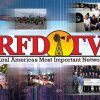The 2017 Census of Agriculture estimates the average U.S. cattle herd consists of around 44 head. That is a lot of cattle to keep track of and requires a lot of expensive fencing. It is why researchers are looking to use technology as a way to keep cattle in line, similar to virtual fencing used for dogs.
“What we’re doing is applying collars to livestock. We’re working with cattle, primarily. Cow-calf pairs. Those collars are interacting with radio towers, and our ranching partner, who has a computer app that he’s using to draw lines on a map. And you can draw boxes to keep livestock in or draw boxes to keep livestock out. And then those instructions are sent from his computer through the radio tower to the callers, and then as the caller approaches those boundaries, the cattle, they hear a beep, and then when they contact the boundary, there’s a beep and a small shock,” said Tony Capizzo.
Capizzo says electronic fencing is good for areas where traditional fences are hard to place. He also notes it allows more days on pasture which can help offset the costs associated with the technology.










